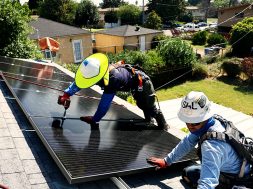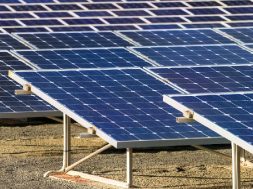
Sunny side up: Residents of Mumbai housing society install city’s largest solar panel
The Bhandup residential complex, Dheeraj Dream 2 CHS, with 546 flats and 2,000 residents, has installed a 200kw renewable energy system.
A housing society in Bhandup has installed a solar project–generating 800kilowatt-hour (kWh) electricity per day – which is possibly the largest renewable energy system used by any residential complex in the city.
A two-bedroom-kitchen apartment in Mumbai uses 10 to 12kWh electricity, per day. In an effort to reduce its carbon footprint, Dheeraj Dream 2 CHS with 546 flats and over 2,000 residents, installed a 200kilowatt rooftop solar plant with 636 solar panels earlier in January. The system is spread across a 25,000sqft area, across four 20-storeyed buildings, that will help cover 70% of the electricity needs of the society by lighting up passages, parking, common areas, four water pumps, bore well motors, and 11 lifts.
Residents estimate they will save Rs36 lakh every year in their electricity bill, with an annual generation of 2.92 lakh kWh. “There are several cost-effective methods. However, we went ahead with this project because it helps us give something back to nature,” said Sanjay Tari, chairman of the society, adding that 17 members of the committee and three other members formed the core committee that executed the project.
According to a carbon footprint calculator by the US Energy and Information Administration, 1kWh consumption of solar energy means 1,060gms of carbon dioxide saved. “The setup will help us save 309.5tonnes of CO2 every year. Such a project usually has a lifespan of 25 years. This means we will be able to save 7,738tonnes of CO2 emissions over the next 25 years,” said Suraj Suvarna, secretary, Dheeraj Dream 2CHS. Costing a little over Rs1 crore, the managing committee did not take any money from its residents for this project and instead opted for a loan. “We were also granted a Rs36-lakh subsidy by the Centre. We expect to recover the cost of installation within 30 months,” said T Ramachandran, treasurer. “The society will generate its own electricity at a cost of Rs 2.71 per unit for 25 years as against the average tariff of Rs14 per unit without the project.”
A net-metering system has been installed, which will transport surplus power generated by the setup back to the grid. This will help other areas with lesser power supply. “Datum Solar, the company that installed the project used the latest technology from Israel,” said Ramachandran. “This is a win-win for everyone in terms of savings, and a way we move away as a society from polluting,” he said.















